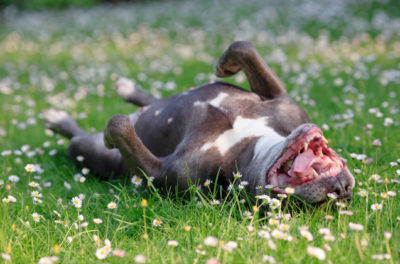
Spring and Summer means fun outdoor times for many Australian families and their canine companions. Unfortunately with beautiful weather comes rapid growth of vegetation meaning grass seeds are out and about. These little suckers can cause lots of pain and suffering to our pets and their owners, they have a sharp tip enabling them to pierce the skin easily and can migrate through the body often bringing infection with them.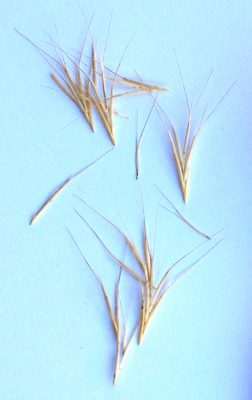
At Hall Vet Surgery the most common places we find grass seeds caught are in ear canals, in between toes, up nostrils, in eyelids or even behind eyeballs, underneath skin in various parts of the body and lodged in the vulva/penis.
Below are a list of symptoms, possible complications and what to do/not to do depending on the location of the grass seed.
EARS
Symptoms:
A grass seed in the ear might make your dog shake their head, cry out in pain, hold their head to one side or scratch at their ear.
Potential Complications:
Grass seeds lodged in the ear canal can cause ear infection, rupture of the ear drum, loss of hearing or balance and even death if infection reaches the brain.
What to do:
Ring your vet to make an appointment as soon as possible.
What not to do:
DO NOT try to remove the grass seed yourself, the ear is likely to be very painful and sensitive and if your pets moves their head suddenly you could severely damage their ear drum. Do not put any ear cleanser down the ear, if there is a grass seed present you will push it closer to the ear drum making it more difficult and hazardous to remove.
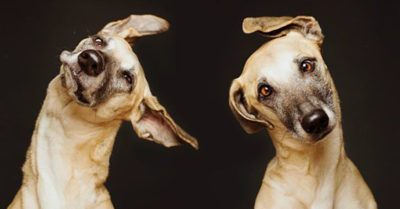
PAWS
Symptoms:
A grass seed caught in your dog’s paw may cause a red, swollen and discharging lump on the paw, your dog may limp or lick/chew at their paw constantly.
Potential Complications:
Infection, migration of the grass seed into leg and possibly in between ligaments or tendons.
What to do:
Ring your vet to make an appointment. Keep area clean with warm salty water and where possible restrain your dog from licking – this can actually push the grass seed further into the skin and cause more damage. Avoid feeding your pet prior to your appointment in case surgical removal is required.
What not to do:
Do not try to remove the grass seed yourself.
NOSE
Symptoms:
Symptoms present when a grass seed has travelled into the nostril are often; sneezing, difficulty breathing, nasal discharge and rubbing or pawing at face.
Potential Complications:
A grass seed in the nostril can cause serious damage to airways and if the seed migrates into the lung it can become a life threatening emergency.
What to do:
Ring your vet to make an appointment as soon as possible. Restrict exercise. Avoid feeding your pet prior to your appointment in case surgical removal is required.
What not to do:
Do not delay treatment.
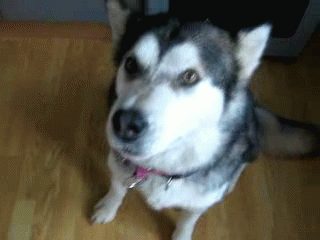
EYES
Symptoms:
Having a grass seed caught in the eye can be extremely painful for your dog, symptoms often seen are; eyes that are swollen closed, discharge from eye, visible third eyelid and some pets may paw at their eye or rub their face on the ground/furniture.
Potential Complications:
Ulceration of the eyes surface, if damage is severe enough eye removal can be necessary.
What to do:
Ring your vet to make an appointment as soon as possible. Avoid feeding your pet prior to your appointment in case surgical removal is required.
What not to do:
Do not delay treatment.

SKIN
Symptoms:
You will often an oozing lump sometimes with a visible entry hole, you may also notice your dog constantly lick at a spot on their body.
Potential Complications:
Infection, migration of the seed through the body.
What to do:
Ring your vet to make an appointment. Keep area clean with warm salty water and where possible restrain your dog from licking – this can actually push the grass seed further into the skin and cause more damage. Avoid feeding your pet prior to your appointment in case surgical removal is required.
What not to do:
Do not try to remove the grass seed yourself even if the tail is visible.
VULVA / PENIS
Symptoms:
Difficulty urinating, blood in urine, licking at the site and redness or swelling.
Potential Complications:
Infection, damage to structures, invasive surgery to remove.
What to do:
Ring your vet to make an appointment. If possible, try to catch a fresh urine sample and bring it with you to your appointment. Avoid feeding your pet prior to your appointment in case surgical removal is required.
What not to do:
Do not delay treatment.
Removal
The animal’s body is not able to break down a grass seed so when a grass seed is embedded it generally requires surgical removal. In the case of surgical removal your pet will usually have a general anaesthetic whilst we extract the offending grass seeds. General Anaesthesia allows the procedure to be painless for your pet and allows your vet to thoroughly investigate the area – we usually find more than one grass seed in any given case so it is important that we are able to have a really good look. Delaying the initial vet visit may result in more invasive (and more expensive) surgeries to find and remove the seed.
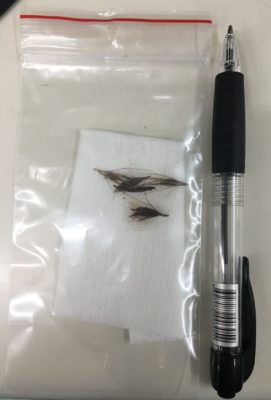
Prevention is the best cure
Here are some ways you can prevent the risk of grass seeds to your dog:
- Avoiding long grass when out walking/exploring (this also helps to minimise the risk of Snake Bites)
- Keeping the grass in your yard tidy and mowed
- Clipping the fur of long haired dogs. If your dog is prone to grass seeds in the ears or between the toes then we recommend regular clipping of these areas to keep the hair short at all times
If your pet is showing any of the above symptoms please give us a call on (02) 62302223.
